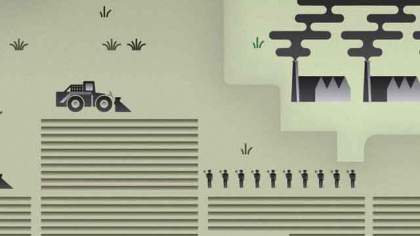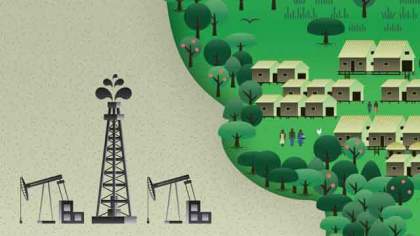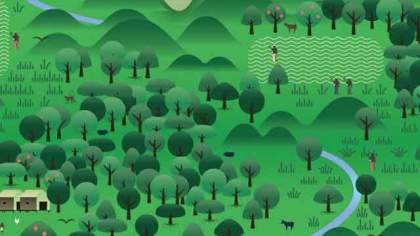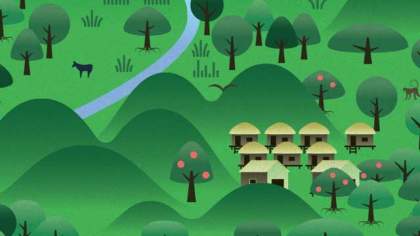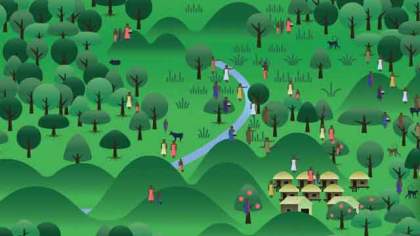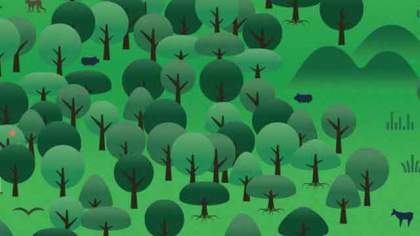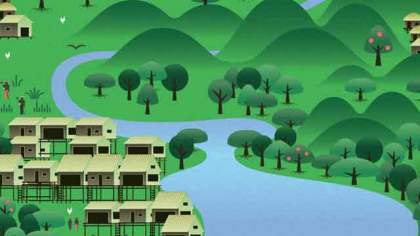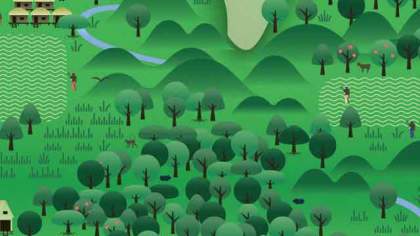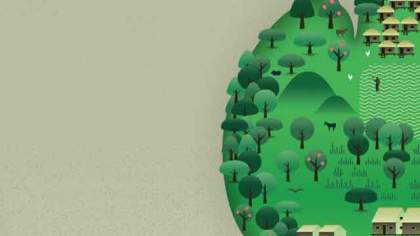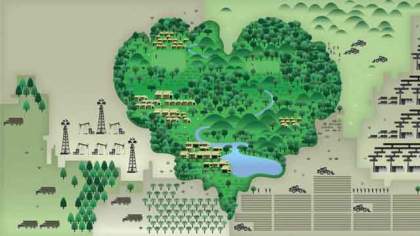-
What is 'Using the Law' about?
Learn from communities that have used national and international law to defend their rights.
This video looks at three legal cases in Indonesia, Tanzania and Paraguay using national, regional and international law. It also looks at the pros and cons of going to court.Length of Video
13 minutes.
Download 'Using the Law' here
Download Facilitators Guide here
Suggestions for Discussion Questions after Community Screenings
- What laws (district level, provincial, national) impact on your community, either negatively or positively? Does your country’s national constitution have articles that relate to the protection of indigenous communities?
- What international laws protect your community? (Such as UN Declaration on the Rights of Indigenous Peoples and the International Labour Organisation Convention No. 169). Has your country signed up to any international treaties that could be used to defend your land rights?
- What are the possible downsides of going to court? Are there any ways to avoid these negative impacts?
- Where can you go to get legal advice?
-
Documents and Downloads
Territories of Life - Facilitators Guide
This booklet is for community facilitators who are using the Territories of Life Video series. The booklet covers information about each video in the series as well as tips on hosting screenings, discussions and action planning sessions with communities.
The United Nations Declaration on the Rights of Indigenous Peoples
The Declaration on the Rights of Indigenous Peoples was adopted by the UN General Assembly in 2007 and is a key human rights instrument which indigenous peoples may use to ensure that their individual and collective rights are respected (United Nations 2008).
Learn and Exercise your rights: A simplified version of the UNDRIP
This booklet presents in a simple and illustrative manner, the collective rights of indigenous peoples as contained in the United Nations Declaration on the Rights of Indigenous Peoples (UNDRIP). It is intended as an educational tool for communities to understand indigenous peoples' rights and to know what they can do to promote and protect their rights (AIPP, IWGIA et al, 2013).
Training Manual on the UN Declaration on the Rights of Indigenous Peoples
This training manual is developed as a basic educational tool kit for the conduct of community trainings and seminars for raising awareness and generating advocacy of the United Nations Declaration on the Rights of Indigenous Peoples (UNDRIP). The manual contains an overview of the UNDRIP, modules on nine thematic areas and one module on practical advocacy skills (AIPP, 2010).
The Community Guide to the UN Declaration on the Rights of Indigenous Peoples
This guide is designed to assist Aboriginal and Torres Strait Islander people to learn about the United Nations Declaration on the Rights of Indigenous Peoples, though much of the information it contains may be useful for other indigenous peoples. It will help you to become familiar with the Declaration and to discover how the rights outlined in it can be used in everyday life. (Australian Human Rights Commission, 2010).
UN Declaration on the Rights of Indigenous Peoples on Free, Prior and Informed Consent Poster
A simplified version on the UN Declaration on the Rights of Indigenous Peoples (UNDRIP) on Free, Prior and Informed Consent (FPIC) produced by Asia Indigenous Peoples Pact (AIPP, 2012).
The Right to Self-Determination and Development of Indigenous Peoples
The world is becoming crowded, and there is a scramble for resources in the name of "sustainable development”. Pressure is being put upon indigenous peoples and on their land and resources that they have inherited from their ancestors and are obliged to pass it on to the next generation for their collective survival. This comic provides a simplified overview of the problems faced by indigenous peoples, their rights and their contributions to sustainable development based on their distinct lifestyles and values (AIPP, 2014).
Rights in Action: Free, Prior and Informed Consent (FPIC) for Indigenous Peoples Comic
Rights in Action: Free, Prior and Informed Consent (FPIC) for Indigenous Peoples is a comic book published by Asia Indigenous People Pact. It illustrates the importance and use of Free, Prior and Informed Consent as a mechanism and a process wherein indigenous peoples undertake their collective decision on matters that affect them, as an exercise of their right to their land, territories and resources, their right to self-determination and to cultural integrity (AIPP, 2013).
UN Declaration on Rights of Indigenous Peoples on Rights to Lands, Territories & Resources Poster
A poster which highlights key articles of the UN Declaration on the Rights of Indigenous Peoples on their rights to lands, territories and resources (Asia Indigenous Peoples Pact, 2012).
Indigenous & Tribal Peoples’ Rights In Practice: A guide to ILO Convention No. 169
In 1989, the International Labour Organization adopted the Indigenous and Tribal Peoples Convention (ILO Convention No. 169). Since then, the Convention has been ratified by 20 countries and has guided and inspired governments and indigenous peoples all over the world in their work to promote and protect indigenous peoples’ rights. Twenty years have passed since the adoption of the Convention. This Guide presents experiences, practices and lessons learned generated so far – thus providing a practical tool for the further understanding and implementation of indigenous peoples’ rights (ILO / Pro 169, 2009).
Other videos
Indigenous Peoples’ Rights to Self-Determination and Development
Who are indigenous peoples, what do they have to offer this world of ours? How are they being affected by the ever accelerating development of the world we live in? What are the safeguards that are being put in place that will help protect them and why should we need these safeguards to ensure that indigenous peoples are in control of their own destiny? Some of the answers to these questions can be found in this animation (Asia Indigenous Peoples Pact, 2014).
Rights in Action: Free, Prior and Informed Consent (FPIC) for Indigenous Peoples
This community-friendly animation video explains the concepts and mechanisms of Free, Prior and Informed Consent (FPIC) through a story of interaction between indigenous peoples and people requesting their consent for new development. Free, Prior and Informed Consent is a core principle of the United Nations Declaration on the Rights of Indigenous Peoples, to guide collective decision-making. FPIC is a continual process that involves mutual respect and meaningful participation of indigenous peoples in decision-making on matters affecting them. The video also includes a story about customary law in the United Nations Declaration on the Rights of Indigenous Peoples. (AIPP, 2013)
ILO 169
When tribal peoples lose their lands, their societies disintegrate and individuals often succumb to alcoholism and fatal diseases. The only international law that can secure tribal peoples’ land rights is the International Labour Organization Convention 169. ILO 169 recognizes and protects tribal peoples’ land ownership rights, and sets a series of minimum UN standards regarding consultation and consent. ILO 169 has been around since 1989, but only twenty-two countries have ratified it so far. At this rate, it will be another 170 years before every country has ratified the Convention. Every country that does so, strengthens its force, and gives tribal peoples a greater chance to survive and thrive (Survival International).
Related links
ILO Convention No. 169
The International Labour Organization's Convention No.169 is a legally binding international instrument open to ratification, which deals specifically with the rights of indigenous and tribal peoples.
The PRO 169 Training Tool Box on Indigenous Peoples’ Rights
PRO 169 is the Programme to Promote ILO Convention No. 169 on Indigenous and Tribal Peoples. It is located within the International Labour Standards Department of the ILO (available in English / Spanish / French).
Free, Prior and Informed Consent (FPIC) Initiative
Learn about the right of Indigenous Peoples to Free, Prior and Informed Consent (FPIC) in this innovative radio series, ready for broadcast across radio stations worldwide. Produced by Cultural Survivial.
Environmental Defender Law Centre
The Environmental Defender Law Center (EDLC) is a non-profit organization that works to protect the human rights of people in developing countries who are fighting to protect their environment.
Namati
Namati is an international organization that tests the potential of legal empowerment through innovative interventions and research. In particular, Namati's Community Land Protection Program supports communities to use national land laws to protect their customary and indigenous lands.Namati also hosts a growing Global Legal Empowerment Network of practitioners and supporters. Network members are active in every continent in the world, whereas Namati’s programs and research focus on exploring the potential of legal empowerment in specific countries, including Sierra Leone, India, Liberia, Mozambique, and Uganda.
ForestDefender
ForestDefender is an online legal database prepared and maintained by the Center for International Environmental Law. It presents a human rights-based approach for analyzing national policies against international standards by providing a snapshot of international human rights and obligations that are relevant in the context of forest governance.
Indian Law Resource Center
The Center provides legal assistance to indigenous peoples of the Americas to combat racism and oppression, to protect their lands and environment, to protect their cultures and ways of life, to achieve sustainable economic development and genuine self-government, and to realize their other human rights.
Earthrights International
EarthRights International (ERI) is a nongovernmental, nonprofit organization that combines the power of law and the power of people in defense of human rights and the environment, defined as "earth rights." ERI specializes in fact-finding, legal actions against perpetrators of earth rights abuses, training grassroots and community leaders, and advocacy campaigns. Through these strategies, ERI seeks to end earth rights abuses, to provide real solutions for real people, and to promote and protect human rights and the environment in the communities where they work.
Global Voices Special Coverage: Indigenous Rights
Special Coverage on Indigenous Rights by Global Voices includes a number of articles and blogs as well as an extensive resource lists
-
Using the Law News
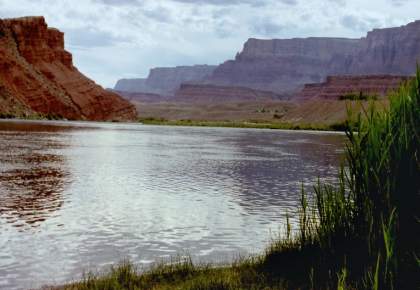
Environmental lawyers seek legal rights for the natural world
Rivers and other natural features have intrinsic rights and should own themselves, rather than being considered property (Source PRI)

‘We’d rather die than lose’: villagers in Indonesia fight for a land rights revolution
A small community on the island of Sumatra is at the heart of a battle for traditional territories that could finally resolve the muddled and exploitative system of laws governing land ownership in Indonesia. (Bevins / the Guardian)
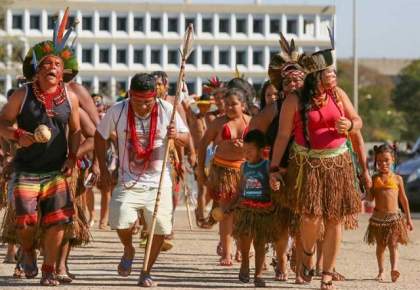
Brazil’s Indians on the march in last ditch effort to stop land theft
Brazilian Supreme Court rulings that will help determine the legality of the marco temporal are expected this Wednesday, 16 August. (Branford / Mongabay)

Brazil’s Temer threatens constitutional indigenous land rights
A storm of protest greeted the 19 July announcement that Brazilian President Michel Temer has approved a recommendation made by the Attorney General’s office (AGU), that federal government bodies should adopt new criteria for setting the boundaries of indigenous land. (Branford & Torres / Mongabay)
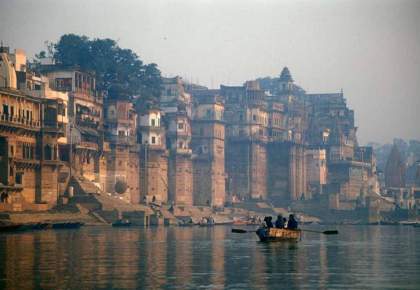
Rivers Get Human Rights: They Can Sue to Protect ThemselvesIn New Zealand and Ecuador, rivers with l
In New Zealand and Ecuador, rivers with legal aspects of “personhood” open up new environmental battles (By Mihnea Tanasescu - Scientific American)
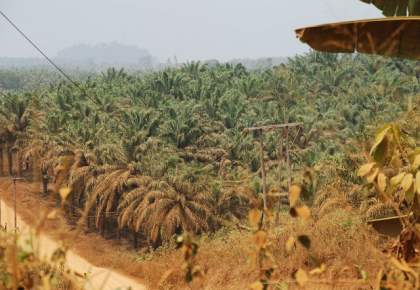
244 Cameroonian farmers bring SGSOC palm oil plantation to justice
Yaounde - Local communities affected by a large-scale palm oil plantation took their case to the Court of First Instance in Bangem, south-west Cameroon, with the first hearing set for 9 November. Greenpeace Africa, who documented the abuse made by the company for the last seven years, launches a call in support for the communities. (Greenpeace / Press Release)

The Community Land Act: Now it’s up to communities
At last Kenya has a Community Land Act. (By LIZ ALDEN WILY)
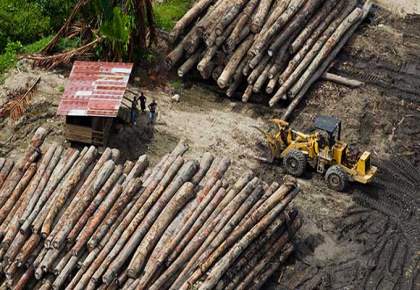
Landmark Court Decisions Return Land to Papua New Guineans
Communities in Papua New Guinea (PNG) are celebrating milestone victories against land grabbers. (Oakland Institute)
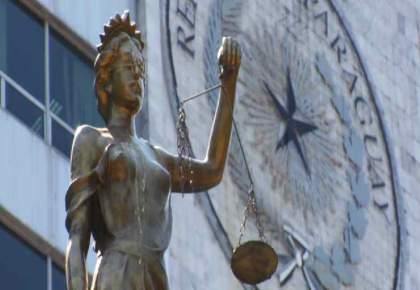
New Video: Using The Law is launched
In this new video from Territories of Life, learn from communities in Indonesia, Tanzania and Paraguay that have used national and international law to defend their rights.
Using the Law - Territories of Life
Learn from communities that have used national and international law to defend their rights.





